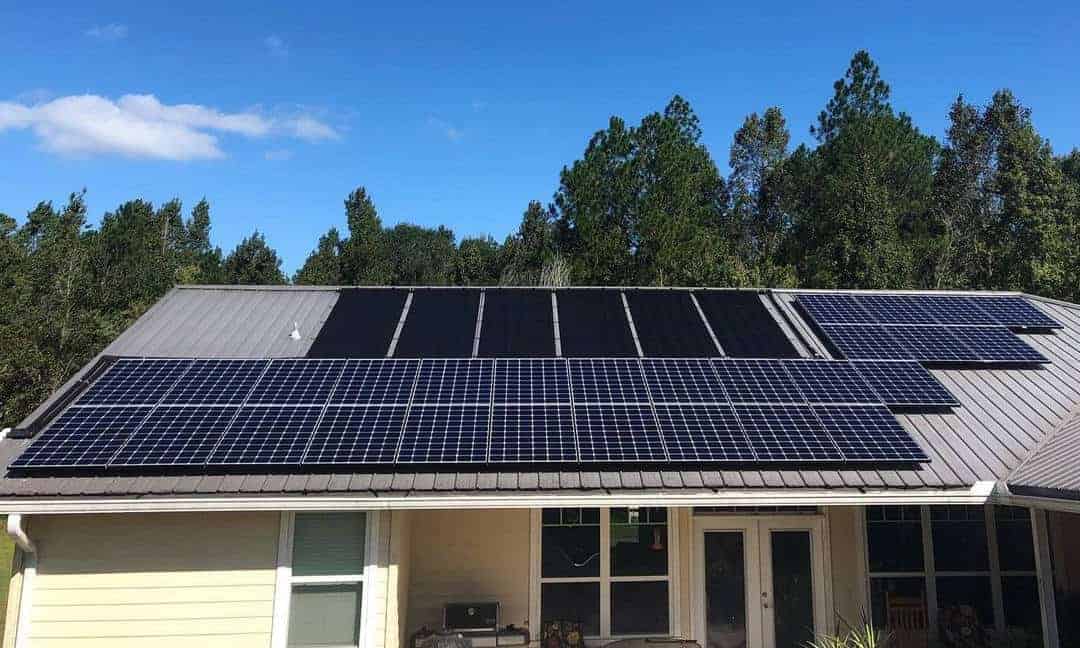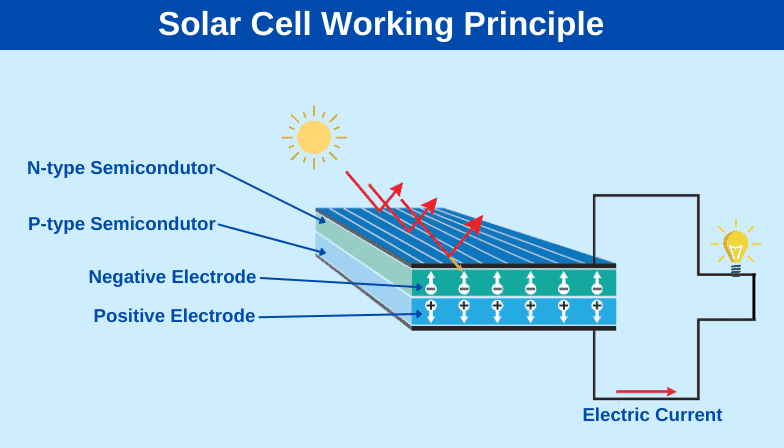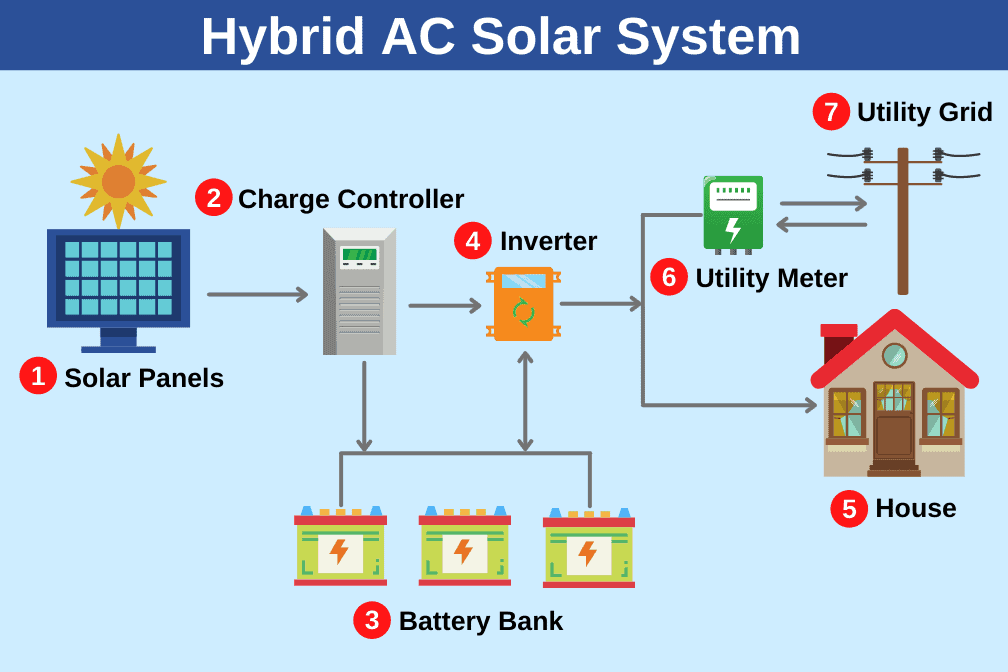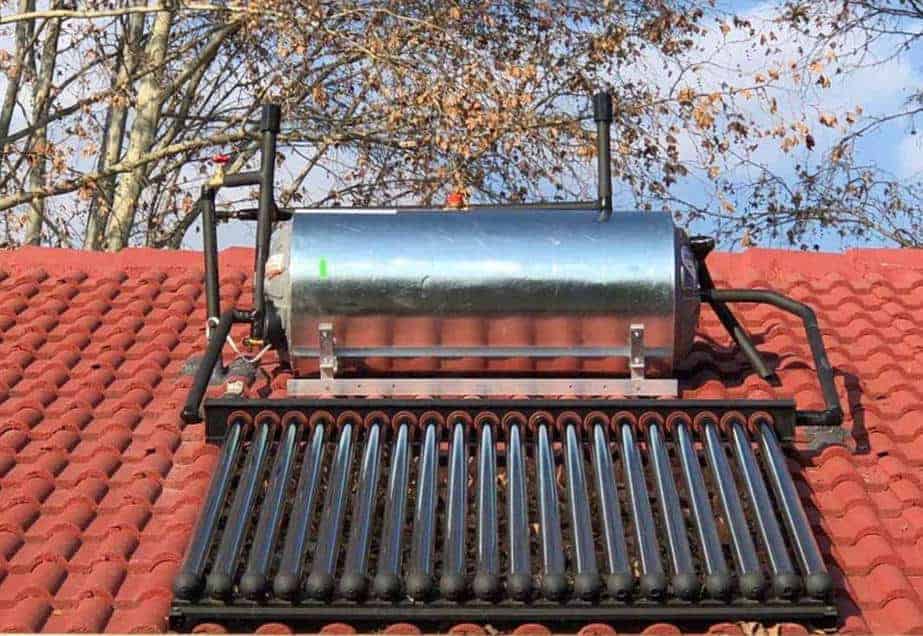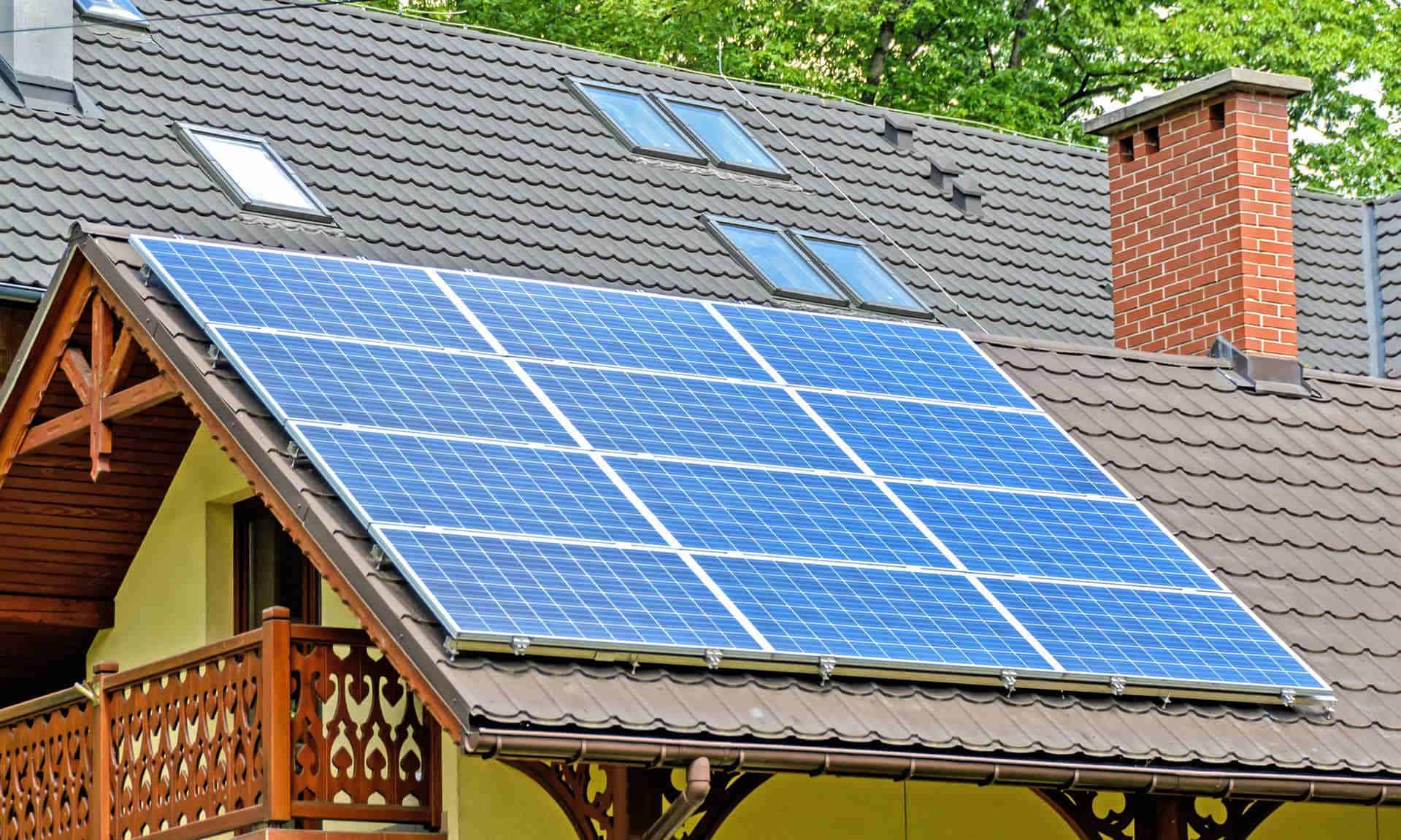More and more people across the world are leaning toward solar power to meet their daily energy needs. Photovoltaic (PV) and Solar Thermal are two popular and established technologies used to generate electricity from the sun.
Both of these solar power technologies harness sunlight, but they operate based on different principles to generate electricity and heat, respectively. They work by absorbing the sun’s rays and converting them into usable energy.
While they’re often used interchangeably, there is a significant difference between solar photovoltaic and solar thermal.
In this article, we’ll break down the photovoltaic vs. solar thermal technologies to help you choose what’s best for your home.
How Does Solar Photovoltaic Work?
Photovoltaic technology involves the use of semiconductors (such as monocrystalline, polycrystalline, and cadmium telluride) to directly convert the sun’s rays into electricity for your house or business. This suggests that without an accompanying energy storage system, photovoltaics can only generate electricity during daylight hours.
If you want a constant electricity supply, you’ll need to combine the semiconductors with other energy generation mechanisms. Anyways, photovoltaic energy is created through a process known as the photovoltaic effect.
In this process, photons, which are elementary particles of sunlight, are converted into electrons. As you may have just guessed, semi-conductors are an integral part of photovoltaic cells that form larger structures known as solar panels. Solar panels are what you often see hoisted on top of roofs.
It’s important to know that semiconductors like monocrystalline and polycrystalline are made from silicon. Each photovoltaic cell consists of two semiconductors, which are shaped into thin layers inside solar panels. When these semiconductors come in contact with sunlight, they ignite the electrical flow.
So, when the sun shines on a solar panel on your rooftop, photons present in the sun’s rays trigger the semiconductors to release electrons. Now, this is the photovoltaic effect process in action. This reaction results in the flow of electrical currents, which can be turned into usable electrical power.
The photovoltaic system can be connected to the grid. In this case, a central inverter (or micro inverter, based on your system setup) has to be used to convert DC produced by solar (photovoltaic) cells into AC for use in the grid. This will also power your home and appliances.
How Does Solar Thermal Work?
Solar thermal’s working principle is entirely different from that of the photovoltaic. In solar thermal technology, sunlight is collected and converted to high-temperature liquid and later transformed into electrical power.
The panels installed on your roof act as sunlight collectors. Flat panels or evacuated tubes are low-to-medium temperature collectors. Concentrated solar systems like Fresnel reflectors, parabolic troughs, solar towers, and dish Stirling are high-temperature collectors.
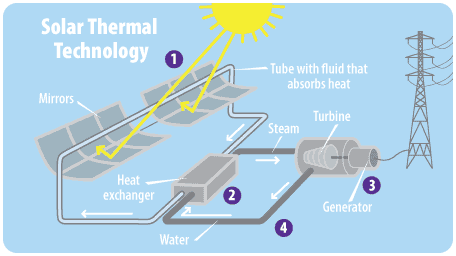
So, once these collectors have captured enough sunlight, they heat the liquid in the tubes. The tubes then transport heated liquid into a cylinder and make it ready for use directly as a source of heat in the solar water heating system.
Usually, the concentrated sunlight can heat the fluid in the form of a liquid or a gas. Things like water, oil, air, salts, and helium can serve as fluids. In the solar water heating system, heated fluids drive various engine types, such as Stirling engines, gas turbines, or steam engines.
These engines can turn electric generators and produce 10’s to 100’s of megawatts of power. Ideally, solar thermal power generation consists of two parts: one part collects the sun’s rays and converts them to heat, and the other converts heat to electrical energy.
Since solar thermal systems produce heat directly, they can store energy in various mediums. Some plants have the potential to generate thermal energy 24 hours a day. So, this power production system is mainly ideal for water heating purposes in industries as well as commercial and residential sectors.
Photovoltaic vs. Solar Thermal: Space & Capacity
When it comes to the amount of space each system will require, there’s an apparent variation. The space a solar photovoltaic PV power station requires can vary significantly, often several tens of square meters, depending on your energy needs.
Photovoltaic solar panels come in all shapes and sizes. The number of cells making up the panel determines the panel’s overall size. A large capacity solar PV panel often has 72 solar cells and can turn 15% to 20% of radiation into electrical energy.
But thanks to improvements in solar panel technology, the efficiency of solar PV systems in converting sunlight into electricity has significantly increased over the years. Modern PV systems are so efficient that they can create more electricity than you actually need, especially during summer days.
In the right circumstances, these systems can fulfill your power needs and even become a source of income. When you have more solar power than you need, you can redirect the excess electricity to the grid and earn some money.
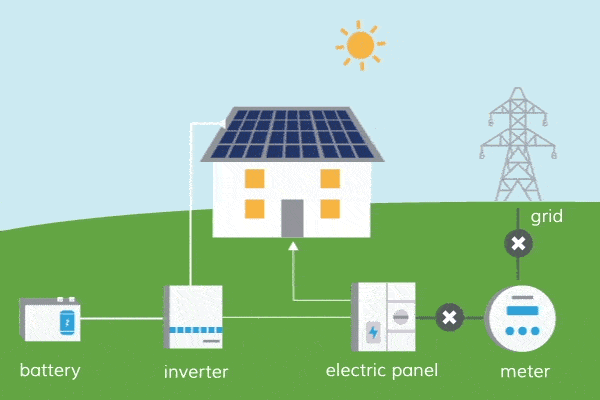
Know that solar PV systems will require a decent amount of space for the solar panels. Luckily, it will take up hardly any space on the interior. All you need is a small interior space to keep some cables and a transformer.
On the other hand, The roof space a solar thermal system requires can also vary, often several square meters, depending on your hot water and heating needs. Despite taking up the least space, they are highly efficient in solar conversion.
A solar thermal system has what it takes to convert up to 90% of the sun’s radiation into usable electricity. Know that if you’re going to heat water, you’ll need to have ample interior space for that purpose.
Photovoltaic vs. Solar: Energy Storage & Efficiency
Solar photovoltaic panels use direct sunlight instead of the sun’s heat. Because they directly convert the sun’s rays into electricity, they are only effective when there is sunlight.
While PV systems may work on cloudy or rainy days, their energy-generating efficiency will be reduced by 10-30%. Additionally, photovoltaics aren’t particularly effective in storing energy.
This is because they use the sun’s rays directly instead of the sun’s heat. Worse still, storing electricity in batteries is neither easy nor practical, especially if it involves large-scale power production.
Meanwhile, solar thermal systems use Thermal Energy Storage technologies (TES) for energy storage. Most of these systems come with hot water storage systems that can store heated water for later use.
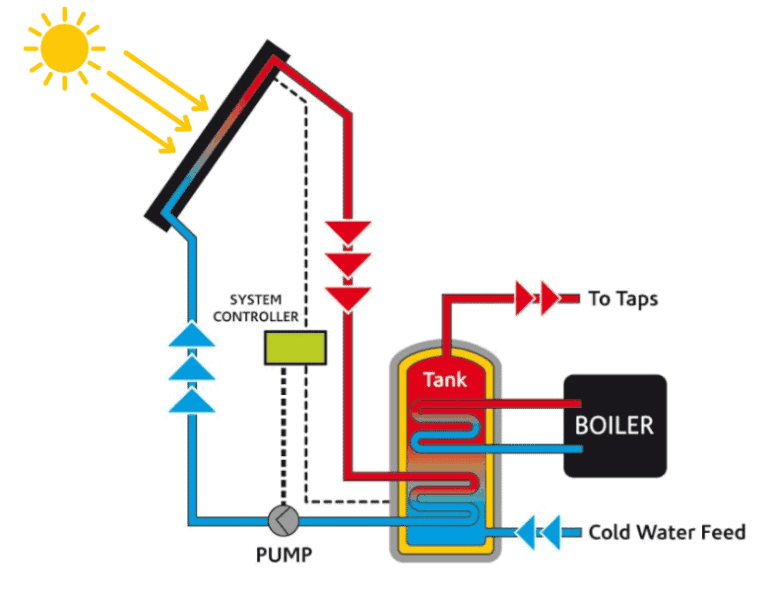
Solar thermal systems can store heated water during the day and convert it into electricity when there is little or no sunlight. As a result, they can be effective during the night time or during cloudy days.
Solar thermal technology has become one of the best solutions for mitigating power irregularity issues. For this reason, solar thermal plants have turned out to be the core of the power generation industry.
What’s more, solar thermal systems can drastically improve both the financial performance and the shareability of solar electricity. This is because they’re capable of producing excess energy for future use.
Simply put, the solar thermal system’s easier and more efficient heat storage makes it a practical option for large-scale energy production.
Photovoltaic vs. Solar Thermal: Cost & Maintenance
In the early days, photovoltaic used to be more expensive than solar thermal. However, due to government incentives like the Feed-In-tariffs, the cost of photovoltaic has declined by more than 50% over the last decade.
The average price for a photovoltaic powered heat pump water heater is between $1,000 and $2,000. This price covers both the heat pump and labor.
For a solar photovoltaic system that’s connected to an existing grid, you may have to meet an extra cost of between $3,500 and $6,000. Therefore, purchasing and installing a fully-fledged PV system will cost you between $5,000 and $8,000, excluding incentives.
That being said, solar PV seems to be a sound long-term investment for homeowners looking to lower their electricity costs as well as their carbon footprint.
Even more interesting is that solar PV needs very little maintenance. All you have to do is clean your panels every couple of years to ensure optimal performance.
As for solar thermal systems, their average cost can range between $7,000 and $10,000 before incentives. While they can be pricy, note that the government offsets the hefty prices with initiatives like Domestic Renewable Heat Incentive (RHI) payments.
Ideally, this means the difference in cost between the two solar power technologies should not be much of a consideration. Even so, solar thermal systems, especially those with moving parts like pumps and controllers, and fluid-filled loops, can require more maintenance than photovoltaic systems. A thermal system can cost as much as $200 a year in maintenance.
Photovoltaic vs. Solar: Which Is Better?
Making a clear-cut choice between photovoltaic and solar can be quite tricky. Both of these green energy technologies are economical and kind to Mother Nature.
A photovoltaic system is the newest solar power technology that can provide a lot of success in the future. If you’d like to reduce your household electricity bills, and perhaps turn your excess electrical power into a possible income, then a solar PV system is your perfect solution.
However, you should invest in the solar thermal system if you’re dealing with exorbitant heat and water bills. So, weigh your needs carefully before choosing between photovoltaic and solar.

